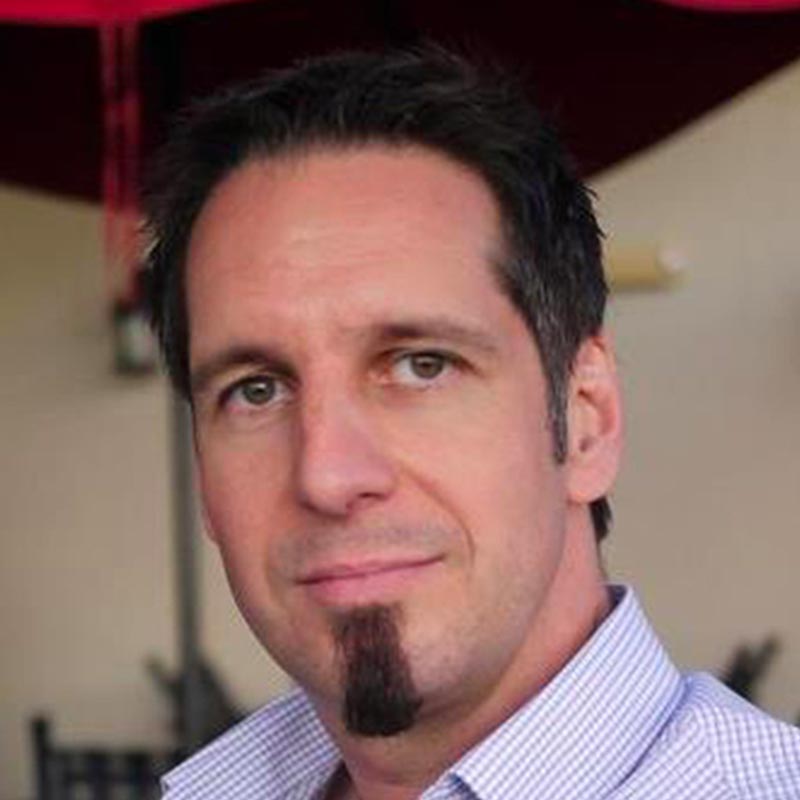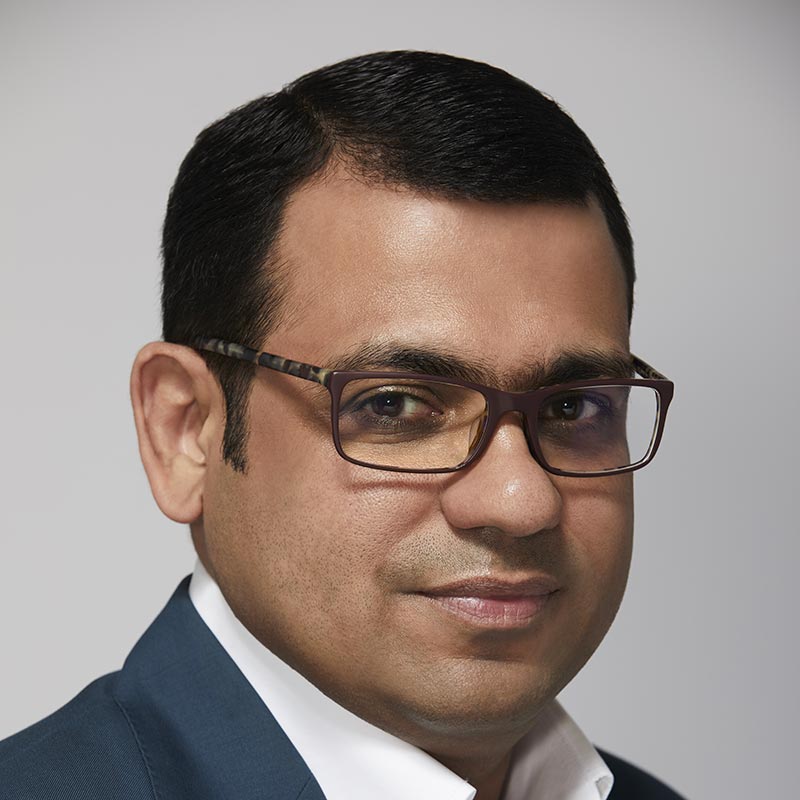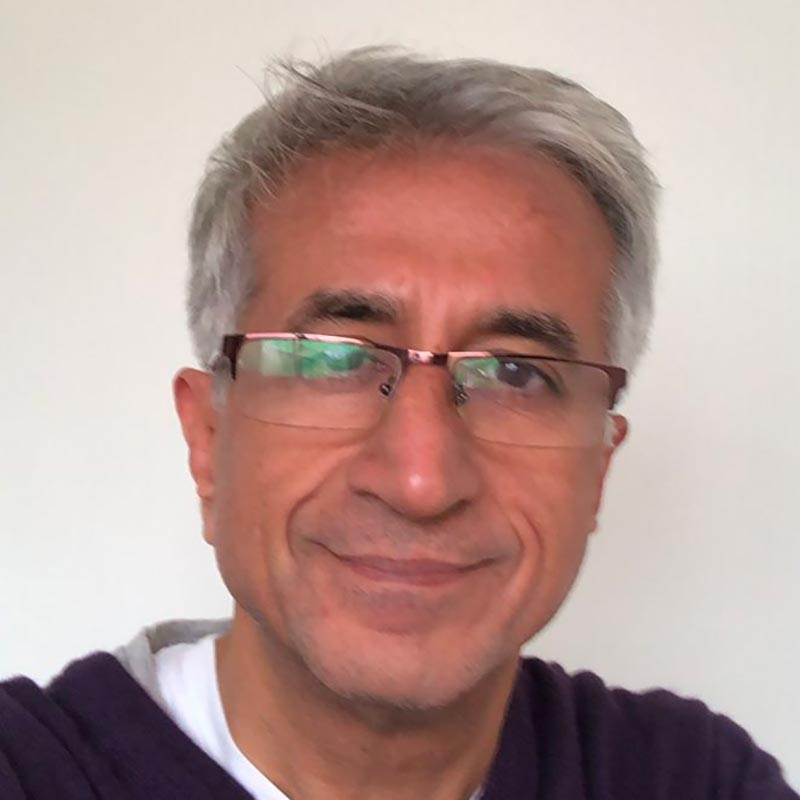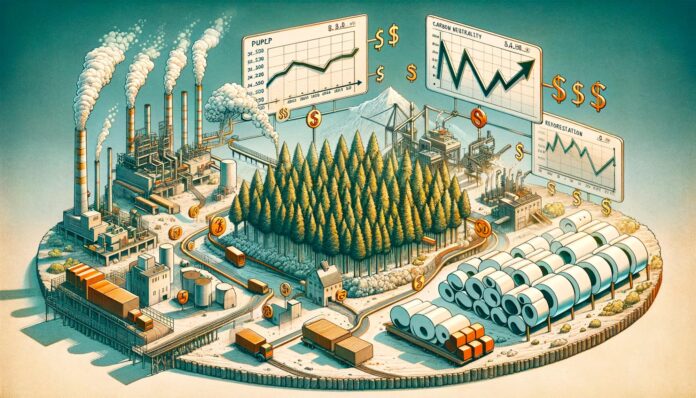As 2023 draws to a close, TWM asks figures from across tissue’s global supply chain for their retrospectives on the year … and predictions for 2024.
Solving South Africa’s energy crisis will have a massive impact on the local economy
Jonathan Sher, Managing Director, Universal Paper & Plastics, South Africa

In the past year, there has been quite a lot of activity in South Africa with some paper mills putting in new machines. These have started to come online in the fourth quarter, and we are yet to see the impact on the market of this extra capacity. Right now the parent roll pricing in South Africa is similar to imported parent rolls, so it would definitely be nice to see the local capacity being discounted to be more competitive with imports.
Pulp prices are always top of mind for us and all producers, as this is our main input cost. We are both fortunate to have a local supplier manufacturing pulp for the tissue market in South Africa, however this supplier bases their pricing on the European PIX index and the Rand/Dollar exchange rate. So in most cases when pulp prices start to rise, we get a double whammy of an increase as the dollar price for pulp goes up, and our local currency devalues against the dollar. Our immediate concern is whether the pulp pricing will remain constant and we are hopeful our government will put in the right measures to improve the state of the economy in South Africa.
We as Universal Paper have taken proactive steps in reducing our carbon footprint as well as reducing our reliance on the already strained electricity grid, by putting in 3 Mw of solar panels which has reduced our total electricity consumption from the grid by 25%.
Generally across the tissue market here, we are expecting to see oversupply in the local market in 2024, and producers fighting for shelf space leading to more price cuts on finished products in the market. As always, we are looking to innovation and new products to bring to the market, to differentiate ourselves from our competitors. This year alone we have introduced two new products to the market that have never been made before. The first being a 3ply household towel product, and the second being a 4ply bathroom tissue product. Both offer customers an even more luxurious and premium experience with tissue products.
Of course, our market is still growing well, and we foresee double digit growth in the retail market. This bodes well for us as we are a big player in the retail sector and are looking to increase our market share in the years to come.
Another hot topic in the South African market is energy. It has been a talking point for some years now but exacerbated in the last three years as we have seen a massive spike in load shedding, caused by strains on the ailing electricity infrastructure. This has a substantial impact on all manufacturers, and we are all trying our best to survive and come up with innovative ways to keep operating at the best levels we can. The rising costs are also playing a big part, and this is where we have been proactive by installing large scale solar panels to reduce our electricity costs.
New capacity is likely to outpace demand growth and will force rationalisation of the manufacturing base.
Mark Christopher, Sr. Market Development Manager, Technology and Marketing, Buckman

The first part of the year saw a lot of requests from our global customer base looking
for ways to help them deal with high pulp costs. As such, many of our 2023 projects were focused on maintaining quality while substituting less expensive pulp sources or reducing basis weights while maintaining caliper.
The most common approaches taken have been optimisation of the creping process
and the application of enzyme technology to modify the fibre surface characteristics. It’s been a very rewarding year with customers banking millions of dollars in savings in this respect despite pulp prices having retraced over the course of the year. As 2023 ends, it looks like the slide in pulp prices may be over as we see price increases of $50 a ton announced for both North America and EMENA last month.
In terms of the main tissue trends expected for 2024, the trend towards digitisation will continue. Most tissue producers still have poor data integration with their key suppliers, and even between their own internal systems at times. As quality, process and operational data streams become integrated and secure data sharing protocols are adopted, they will be able to leverage new unique operational insights and benefits not available to them otherwise. We are working through some of these challenges with both the OEMs and tissue makers.
Growth of tissue production capacity is slated to continue in Latin America, North America, and EMENA. I think the area where this new capacity is going to have the greatest impact is in North America, since the announced capacity is likely going to outpace demand growth and will force rationalisation of the manufacturing base.
For the immediate future, as always pulp pricing is our largest concern and second to that would be the energy crises in South Africa. If we can combat the energy crises and the state utility can improve the uptime of the generation plants, we are confident this will have a massive impact on the local economy and allow for much better growth rates. This in turn will strengthen our local currency which will then help us combat pulp pricing increases.
The machines in the old-and-slow quadrant are going to be placed under even greater cost pressures as these newer assets come online. Many customers are driving cost and efficiency initiatives to prepare for the expected market pressure, and these align very well with our technological offerings, so we know that the next few years are going to place a lot of demand for our field support teams.
Inflation is another hot topic. We face similar challenges on the inflation side as our customers do with respect to inflation. Significant resources and capital have been allocated internally towards improving our own efficiencies and cost position to ensure we can maintain our competitiveness. Looking outside, our Maximyze fibre modification technology has become hugely popular across Europe given the asymmetric energy costs they suffer. A tissue refiner can be the single largest draw of electricity on a tissue machine and brings with it many undesirable side effects. Tissue makers want to minimise refining intensities to avoid the high cost of power and negative side effects on quality and operations, and we continue to invest in product development in this area.
For a supplier to the industry such as Buckman, cost of service is a big part of our spend. Given the complexity of the tissue process and its variability in nature across each asset, there is often no way around sending a subject matter expert to the site to assist with troubleshooting and continuous improvement. But as technology evolves within the monitoring and control space, it is becoming increasingly clear that tremendous insights can be garnered from afar with the right data.
Solutions are hard to find, so bring on AI and quantum computing
Dr Phillip Lawrence, Department of Government and International Relations, University of Sydney

World, are you ready? Get ready to blast off. That will be the catchphrase for the next few years as the world stands on the precipice of either one of the most creative periods of humanity or the end of us on earth. According to the developers of the new wave of artificial intelligence, AI may become ultimately destructive unless we can put urgent controls on it. On the other hand, in the recent Foreign Affairs journal, an article by James Manyika and Michael Spence claims it harbours an economic revolution, adding trillions of dollars to the global economy. AI already plays a significant part in our life, and most of us would hardly recognise it. That is the insidious part of AI. One minute, you hear about it; next, you cannot do without it.
BING, the Microsoft search engine, has surpassed Google Search. It has elevated searching the internet to the next level, and there is no doubt Google will soon have something much better.
Following up close behind AI is Quantum computing. Only a few years ago, most of us believed quantum computers were still decades away. Now, it is perhaps months or weeks. Imagine a single computer that is a trillion times faster than the world’s fastest supercomputer. (That was NOT a typographic error; BTW, a trillion times faster). The world’s leading technology firms are hell bent on releasing their version first: Google, Amazon, Apple, Microsoft, etc. They all have quantum computers now in development. Imagine modelling the most complex scientific, medical, environmental, political, and business problems in process monitoring, microbial control, boiler and cooling tower management and asset protection. We have a PhD scientist and engineer staffed lab monitoring our online digital systems 24/7. They are looking for specific anomalies and alarms from our digital systems at customer locations, and they alert our field reps in real time. This approach allows productive, real-time discussions with customers remotely. This can allow quicker action by the customer before the arrival of the subject matter expert (SME) or, in some cases, negating the need for the SME to travel to the site. As these approaches are adopted, they will reduce the cost of service to our customers and improve both the speed and quality of service by a fraction of a second. Intractable, diabolical, and wicked problems with no solution can be solved in less than a second.
Modelling solutions to disputed state territories, negotiating international relations between states, developing new drugs for the next pandemic (it will happen), new manufacturing techniques and opening new markets. At the end of every decade, 90% of jobs did not exist at the start of the decade. We just need to last a decade to see it.
The geopolitical situation is just as perplexing. Some years ago, American political scientist Francis Fukuyama called the fall of the Berlin Wall the ‘end of history’; he meant the international system of capitalism had won the ideological war for our hearts and souls (actually, dollars, pounds, and Euros). Perhaps nobody told Putin and Xi Jinping. China is now technically the world’s biggest economy and the largest polluter, but remarkably, it is still classed as a developing country. China is legitimate; that’s a lot more than can be said about Russia.
Perhaps Fukuyama meant that the world has entered a new history, one characterised by what economists now call ’The Great Acceleration’. From around the mid-1970s, but more likely early 1990s, with the wide release of the internet, globalisation boomed, inviting into the college of capitalist states countries like China and Russia, arch enemies of capitalist ideology. But now it is all about money.
At the same time, the US is in decline; that is what Trump based his campaign on. It’s a country in decline, and I alone can fix it, (I paraphrase Donald here.) So, the next few years will see the intensity of the economic tussle between China and the US. But they are both too aware of the consequences of true conflict. Many smart people behind the scenes will not let things get out of hand. It’s the rogue states we all need to worry about. They are left out of globalisation, (The Great Acceleration) and all the benefits of investment, and knowledge sharing. They have nothing to lose.
What will become more interesting is that for 2024, the best book to read will be one written by a 17-year-old woman 206 years ago – Frankenstein or The Modern Prometheus. Concepts in Mary Shelley’s iconic work has come to fruition in almost every conceivable interpretation that has been discussed since it was originally published. In the story, when Dr. Frankenstein sees his creature come to life, he runs out of his laboratory, goes to his bedroom, and paces up and down, panicking about what he has created. A group of AI developers fronted the US Senate in 2023 to say: “…the risks of AI should be a global priority alongside other societal scale risks such as pandemics and nuclear war”, or rather, ‘oh no, what have we done?’ Mary Shelley’s book offers some hope for dealing with AI. The creature wanted to be loved and useful, but society only focused on his negatives.
Embracing AI appropriately might add trillions to the global economy and benefit many people worldwide. AI could be used to solve intractable problems such as climate change, pandemics, and nuclear war.
Private label – both in AfH and Retail – continues to grow, accelerated by a consolidation in distribution, a direct result of M&A within
Nishant Grover, Chief Executive Tissues International, Asia Pulp & Paper

While our business was largely resilient due to our local presence in core markets, we came out stronger from the prevailing adversities. We are set to post strong double-digit growth for our global tissue business in 2023. During times of turbulence, we maintained razor-sharp focus on four core areas, which was made possible by our committed workforce: –
1.Investing and optimising production – our latest state-of-the-art production facility in Indonesia – OKI became operational. We took initiatives to right size and modernise our operations in Australia. We have a brand-new facility coming up in New Zealand. While we have three strategically located manufacturing sites in the USA, our plants in Asia provide very efficient back-up support.
2.Strengthening our product offering – we developed the first carbon-neutral tissue, which has just hit the shelves in New Zealand. Several other premium products were also launched, improving the overall category, like micro capsulated facial tissue, 4-ply toilet rolls in many markets, TAD toilet rolls in Australia, and kitchen wipes, etc.
3.Enhancing customer and consumer engagement – we optimised our route to market in many markets in order to bring our superior products most efficiently to the consumer. We increased our branding activity in several markets like Singapore. We believe that we are closer than ever to our strategic partners in key markets, while we continue developing new ones. This dual approach of consolidation and expansion has not only helped secure our position in the market but also contributed to the growth and resilience of our operations.
There is a wide spectrum of trends across the world but we can point out some common ones for the near term. Private label in both AfH and Retail continue to grow. In some markets like the USA, this trend is being accelerated by consolidation in distribution, a direct result of mergers and acquisitions within the industry. In other mature markets like Singapore, private label leads the industry, including innovation.
Sustainable tissue products are growing in demand. This trend is not just a passing phase but a fundamental shift in consumer behaviour. Retailers are now adopting a holistic approach to sustainability, encompassing everything from sourcing to the total carbon impact and lifecycle assessments of products, from production to end-of-life. This comprehensive view underlines the growing importance of environmental considerations in consumer choices.
Finally, regional and global legislation regarding plastic use is set to have a significant impact. An example of this is the mandate by the Australian government that by 2025 all wrapping must be non- plastic, recyclable, or compostable.
The local tissue market continues to exhibit growth potential, presenting us with several opportunities. The AfH tissue market, in particular, has been consistent since the Covid-19 pandemic. While office occupancy rates have been slow to increase, other sectors such as hospitality, healthcare, and manufacturing have mostly rebounded to pre- pandemic levels. This rebound signifies a recovery in significant portions of the market and presents anopportunity for targeted growth strategies.
North America still offers considerable opportunities. Our understanding of these markets’ dynamics allows us to identify and capitalise on specific growth areas. We see Mexico as a promising opportunity. The evolving demographics of the Mexican consumer base present a unique landscape for growth. As consumer preferences and demands shift, there is potential to introduce new products that resonate with the changing demographic profile. Our global manufacturing footprint enables us to navigate through issues like labour and energy. We maintain the supply resilience of our products to customers through more than one manufacturing unit.
This is coupled with our ability to adapt, innovate, and collaborate. It ensures that we remain a reliable and competitive player in the ever-evolving tissue industry, capable of navigating through challenging economic conditions while still delivering quality and value to our customers.
As we approach the end of 2023, we see a number of disruptions like supply chain, energy costs, inflation of commodities etc ease out. However, macroeconomic factors remain a major challenge. World tissue market growth in 2023 has slowed over 2022 and several parts of the world remain in high inflation/ economic distress. This environment generates a lot of headwinds for growth.
Another major challenge to the business is the inflation of raw materials. The prices have just started to stabilise in the middle of 2023 and any spikes pose a significant risk.In response to these challenges, we have become more proactive and agile in our approach to competing for market share. Staying closely connected with our customers is imperative as we navigate the uncertain terrain of the tissue market. Understanding and responding to their evolving needs and preferences is crucial.
Our ability to proactively address these issues, maintain a close rapport with customers, and adapt to evolving market dynamics will be key in charting a successful course in the years to come.
By embracing these challenges as opportunities for innovation and growth, we are positioning ourselves to not only overcome current obstacles but also to capitalise on new prospects in the tissue market.
More new tissue paper mills will result in more competitive pricing in India
Sumit Khanna, Chief Executive of New Dehli-based Beeta Tissues, India

Rising pulp costs in the past year have had the most impact on our industry. In India, virgin tissue paper grade is priced more in comparison to recycled tissue paper, so there was a shift in the preference of usage by the institution consumer – and the household consumer too!
The main tissue trend in our industry that I foresee in 2024 is that exports may decrease as China has opened up very aggressively with good discounts in almost every industry. Worldwide, there are low sentiments among consumers due to war and war-like situations everywhere.
The rise in inflation around the world has also substantially impacted our business as the prices of raw materials have gone up too significantly resulting in the high price of finished goods resulting in low sales. It has created a shift in the preference of paper from virgin to recycled.
The main challenges for the immediate future that I see for the Indian tissue market is that our tissue paper prices are much higher compared to prices globally. The other challenges are E-commerce competition, and sustainability issues.
However, there are also many opportunities to take advantage of and create. One of the main opportunities we have is to increase the number of new tissue paper mills making recycled paper and using virgin paper. This will result in more competitive pricing in India, resulting in more sales and consequently increasing the tissue paper market size.

































